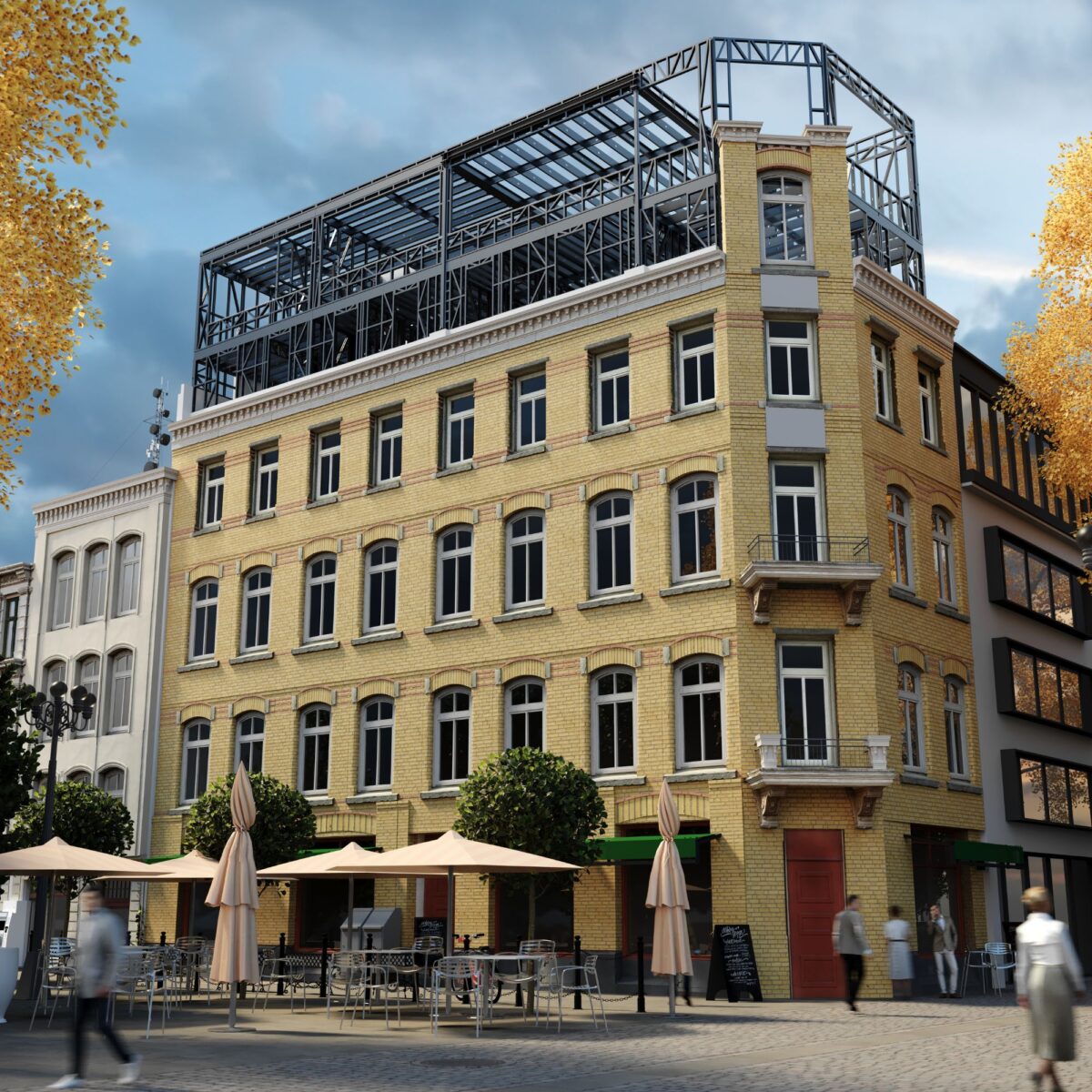Denser and stronger than any other material, but just as durable, steel is a popular material for ensuring the durability of buildings. It is divided into two structures: the light steel frame and the more traditional structural steelwork with hot rolled steel.
Let’s compare these two systems in this article.

Building with steel: a fast, modern construction process.
Steel constructions are generally innovative, competitive, easy to install and durable. They can meet the requirements of any project and the specific features of any building, whether industrial, commercial, tertiary or residential.
Steel has many advantages:
- High strength-to-weight ratio
- Ease of repair
- Sustainability and circularity
- Reduced waste
There are several types of steel to allow to build a structure: Hot Rolled Steel with an old-style technique and Light Gauge Steel frame structures more recent.
However, they are very different. Light steel frames are less expensive, allow greater architectural freedom and are quicker to build.
Let’s compare light steel frame and structural steelwork
The differences between each technique will help you choose the best technique for your construction and your project.
Lightweight steel frame uses thin, cold-rolled steel with less material: Light Gauge Steel.
Structural steelwork uses heavy, hot rolled steel.
Beyond this structural difference between the two steels, there are multiple advantages to each technique.
Structural steelwork with hot rolled steel:
Advantages:
- Structural strength: traditional steel structure offers high structural strength, making it suitable for large-scale and large-span structures.
- Durability: It has high durability and can withstand heavy loads, making it suitable for industrial buildings and skyscrapers.
- Adaptability: Can be used in a variety of architectural designs and complex construction projects.
Disadvantages:
- Weight: Heavy steel is heavier, which can lead to higher costs for foundations and especially transportation costs.
- Initial cost: Often more expensive to purchase and install than lightweight steel.
- Construction time: Building with hot rolled steel can take longer, due to the complexity of connections and the handling of large parts.
The beSteel lightweight steel frame:
- Magnelis steel which prevents corrosion and is 7 times stronger than traditional galvanized steel.
- Lightweight: Less weight than hot rolled steel, which can reduce foundation impact and facilitate transport. Today, it has the best construction-to-weight ratio in the sector.
- Quick and easy to build: Construction with lightweight steel frames is often quicker due to the ease with which components can be assembled. This ease of assembly means less labour is required. The off-site preparation of its components means less thinking during construction. This off-site preparation means fewer surprises and inconsistencies during construction. This speed also avoids nuisance to neighbours and does not require noisy tools.
- Cost: Generally less expensive to purchase and install than traditional steel structure.
- Architectural versatility: Offers great flexibility in architectural design.
- Para-seismic: Lightweight steel framing has the most relevant deformation and reshaping power in construction. Its lightness also considerably reduces the amplitudes of inertia of movement than any other material.
- Para-cyclonic: Thanks to its high mechanical strength, light weight, flexibility, corrosion resistance and compliance with construction standards specific to hurricane zones, this contributes significantly to minimising damage caused by high winds.
Disadvantages:
- Structural strength: Less structurally resistant than traditional steel structure, which may limit its use in large-scale or overspan projects.
- Durability: May require additional coatings to improve durability under certain conditions, which is why beSteel uses Magnelis steel.
- Span limitations: May have span limitations, which may require additional posts or support elements. This explains the use of hybrid systems at beSteel, with hot rolled steel beams in a light steel frame.
Building like never before
This technology allows us to build better hybrid constructions, combining steel frame and new insulation methods. Today, we’re developing this type of products at BuildUp.
Our goal is to enable fast, lightweight, incredibly durable and cost-effective projects.
Today, our Retrofit product enables you to insulate from the outside and renovate your buildings – find out more here. In the future, our Totalfit product will combine beSteel steel frame with our Retrofit panels to build like never before.




